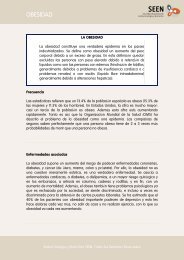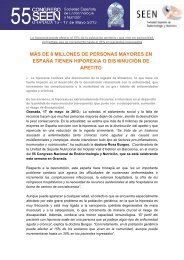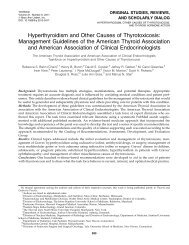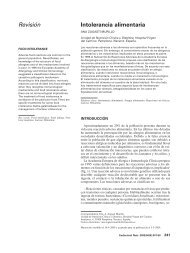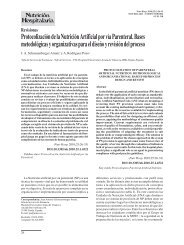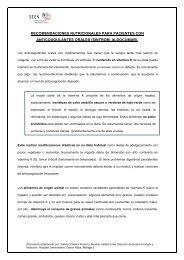Basic Concepts of Fluid and Electrolyte Therapy
Basic Concepts of Fluid and Electrolyte Therapy
Basic Concepts of Fluid and Electrolyte Therapy
Create successful ePaper yourself
Turn your PDF publications into a flip-book with our unique Google optimized e-Paper software.
Table 15: Causes <strong>of</strong> metabolic acidosis (hyperchloraemic) with a normal anion gap<br />
Gastrointestinal HCO 3 – loss<br />
diarrhoea<br />
fistulae<br />
Renal HCO 3 – loss<br />
renal tubular acidosis<br />
acetazolamide<br />
Infusion <strong>of</strong> 0.9% saline<br />
Metabolic acidosis with a high anion gap - can be caused by four<br />
broad categories <strong>of</strong> disorders including ketoacidosis, lactic acidosis,<br />
poisonings or advanced acute or chronic kidney disease.<br />
Ketosis occurs when there is a lack <strong>of</strong> insulin or glucose depletion. To<br />
compensate fatty acids are oxidised to produce energy which results<br />
in the production <strong>of</strong> ketoacids as a by-product.<br />
Severe diabetic ketoacidosis occurs secondary to insulin deficiency<br />
(Chapter 10)<br />
Ketosis may also occur with prolonged starvation or in alcoholics<br />
Lactic acidosis is subdivided into<br />
Type A lactic acidosis - secondary to insufficient oxygen delivery to<br />
the tissues<br />
hypovolaemic shock<br />
cardiogenic shock<br />
septic shock<br />
Type B lactic acidosis – impaired gluconeogenesis causing inability<br />
to clear lactate<br />
liver failure<br />
metformin<br />
67




